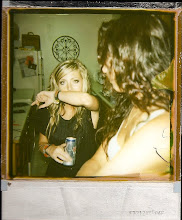

But, on the other hand, I went online and googled Avant-Garde animators and the name Fischinger came up. I went and looked at a couple of his films, including his excerpt from Fantasia. In many ways, his excerpt in Fantasia reminded me of the Stan Brakhage film that we watched in class. The way in which the lines and dots jump about the screen, sometimes on beat and sometimes moving apart from the music. It was strange how the animation and film scratching and manipulation look so much alike. His films tend to fall on the Avant Garde end, they follow the guidelines that Wells explains such as, “various shapes and forms are often used rather than figures.” His animations consist mainly of shapes and abstract forms, much like a Brakhage film or such.
So, I think it is a bit difficult to directly categorize these types of animations that play with the conventional formats of animation in either Orthodox, Experimental, or Avant-Garde. Rather, these days I would think that filmmakers are beginning to experiment a lot more with those guidelines, and the line between them is quite blurred in some cases. I am a bit embarrassed to give this example, but…the cartoon Spongebob Squarepants dabbles a bit in the mixing of media. They not only use animation, but they also use film/video footage as part of the cartoon itself, such as when they go on land. So, even the conventional cel animations like this are dabbling a bit in the experimentation in animation. I feel like there is more and more of this sort of stuff as time goes on. But, I can’t say that I don’t love the simplicity of old cartoons, like the ones I watched as a child. I loved getting up on Saturday mornings and catching the Bugs Bunny Show. They seem a bit outdated for today’s kids because they are not as high tech as what is out right now, but there is something about that simplistic animation that I love. Like I said before, The Sword and the Stone is one of my favorite Disney films.
I personally don’t enjoy the new Disney films that come out, this could be in part because the humor has become cheap and now circles around passing gas…and other bodily functions. But, it could also be that I am a bit nostalgic about that simplistic form that is so little seen in mainstream animation anymore. I’m not sure where I was going with that.

No comments:
Post a Comment